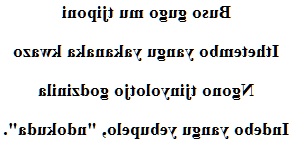Kalanga love poem
Iponi
Buso gugo mu tjiponi
Ithetembo yangu yakanaka kwazo
Ngono tjinyolotjo godzinila
Indebo yangu yebupelo, "ndokuda".


→ French poem ←
Kalanga language
Kalanga love poem (alternative names and dialects : Kalaka, Western Shona, Humbe, Nyayi, Sekalaka, Lilima, Wanyai, Makalaka, Limima, Kalana, Banyai, Talahundra, Chikalanga, Peri, Nyai, Wakalanga, Bakaa, Abanyai, Sekalaña, Kanana, Autonym : Ikalanga, Tjikalanga) for a black girl and African jewel.
This Bantu language, Shona-Nyai, from southern Africa spoken in eastern Botswana and western Zimbabwe, known for its many phonemes, is a language close to Shona.
It is practiced by 1 million people. If in Botswana, this language has no official status, it is one of the official languages of Zimbabwe.
In Zimbabwe, there are associations and organizations dedicated to the promotion of Kalanga, particularly in the field of education and literacy.
Despite everything for the moment, Ikalanga remains above all a language of oral tradition, and the memory of the Kalanga people and their language only exists through the knowledge of the elders.
In Botswana, English is the official language and holds a prestigious status, so the Kalangas learn English at school and use it at university. This, added to the status that in English, continues to introduce into their language, many borrowings.
There is still a will to promote the language, doubled by the effort that missionaries do to translate the Bible.
Kalanga and iKalanga are the shortened forms of TjiKalanga, a language that has several dialects due to divisions linked to colonial borders, and whose standard is based on the Lilima (Ririma) dialect.
This language, also called West Shona, was influenced by the northern Sotho languages, and with them, got important lexical and phonological changes. This now makes it far enough away from Shona to be considered a separate language.
The Kalangas (Bakalakas, Bakalangas) are farmers settled for a very long time in the south of central Zimbabwe.
Zimbabwe history
The Zimbabwe populations which had the fire control must had arrive from the north to the 3rd century, covering "age of stone" groups, probably close to the Bochimans (sites of: Gokomere, Ziwa).
Sites dating from the 10th century, testify to a pastoral culture allied to a gold explotation, as it appears on the site of Zimbabwe.
Some of the stone statues (bird figures and birds carved from a chlorite rock), among the oldest African plastic works, come from Zimbabwe.
They date back to the 15th century, they were found, with fragments of figurines and pottery, in the ruins of the Zimbabwe's acropolis, part of a vast architectural complex, whose exact date is still a problem.
Shona poem